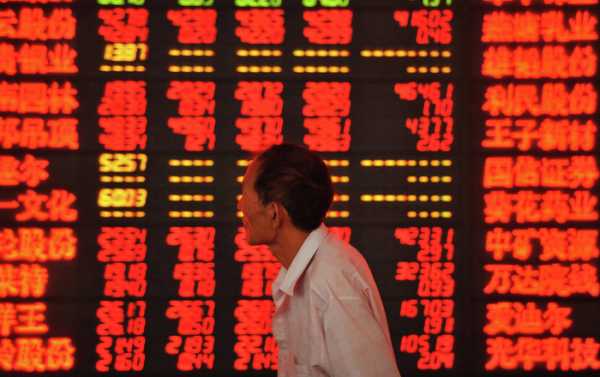
Beijing’s plan to cut taxes, boost spending, and loosen monetary policies this year are seen as supporting the nation’s economic growth by many investors, while a possible Sino-American trade deal could provide an additional boost to China’s GDP growth.
Kristian Rouz — Mainland China’s plans to loosen its central bank policies, implement partial tax cuts, and boost budget spending appears to have eased some concerns among investors over the ongoing cooling of the world’s second-largest economy.
However, fears related to China’s significant debt burden — including the leverage amassed as a result of so-called ‘shadow banking’ — still stir anxiety among investors and policymakers alike.
An upcoming US-China free trade deal, along with the People’s Bank of China’s (PBOC) plans to further reduce reserve requirement ratios (RRR’s) for commercials banks, and the ongoing gradual opening of the Chinese economy to international companies have all supported a modestly optimistic perception of China among investors over the past few weeks.
Some experts have already started to advise global enterprises to enter the Chinese market now, as they see a US-Chinese trade deal as likely to become a reality by mid-2019 — and there could be some opportunities in the Chinese market to take advantage of now.
“The point is that both sides (the US and China) are now under a lot of pressure to get a deal done,” Stefan Hofer of Hong Kong-based LGT Bank said. “I think it’s perfectly okay for investors to take on China exposure now in anticipation of that.”
Such optimistic sentiments are gradually spreading across the globe, as the modestly positive tone of the ongoing Sino-American talks might suggest both sides are indeed interested in striking a compromise agreement to alleviate tensions in bilateral ties, rather than engage in a lengthy war of attrition on trade, which would involve further tariffs and regulatory restrictions.
The China-US trade tensions greatly contributed to the disruptions in international trade in the second half of 2018. A mutual exchange in tariffs, national security investigations of Chinese trade in the US, and China’s threats of retaliation have affected trade between the two countries and their third-party trade partners as well.
Now as these fears subside, global trade might be in for a new era of expansion and acceleration.
This comes as China has lowered its GDP growth outlook for this year to 6 percent — down from the previously-predicted 6.5 percent — after 6.4-percent growth last year. Beijing appears to still price last year’s trade losses into its 2019 GDP growth assessments.
However, China’s plans to stimulate its slowing economy — announced at the height of trade tensions with the US last year — appear to still be intact.
“Economic growth should stabilise as the (Chinese) government releases additional stimulus, including corporate tax cuts, credit easing, infrastructure investment, and looser real estate rules in lower-tier cities,” analysts from London-based think tank IHS Markit said in a note last week.
However, one major concern remains — and has little, if anything, to do with the legacy of last year’s early stages of the US-Chinese trade war. China’s burden of corporate, provincial, and national debt — which stands, according to some estimates, at roughly 300 percent of the nation’s GDP — is expected to weigh heavily on China’s GDP growth rate for years, if not decades, to come.
Adding to the concerns, Beijing’s plans to boost budget spending and support commercial bank lending could drive provincial governments and state-and-private-sector enterprises deeper into debt. The lion’s share of this debt is ultimately guaranteed by the central government in Beijing — suggesting China could be facing a mounting burden of ‘hidden’ national debt.
Experts say this uncertainty is particularly alarming, as no one is quite certain of how China’s debt is formed, and how it is spent. Typically, a rising debt level supports real GDP expansion, but in China, this might not be the case.
“The uncertainty it creates makes global capital markets, individual investors and even local domestic consumers nervous about that trickle-down effect,” Jane Golley, acting director of the Australian Centre on China in the World at Australian National University, said.
Another concern is the growing industry of ‘shadow lending’ and so-called ‘zombie firms’, which don’t generate any revenue or output, but are used as shell companies instead, to funnel huge sums of money across various sectors of China’s huge economy and overseas — and, again, no one is quite sure, where the money comes from or where it goes.
“This is slowly grinding down China’s growth rate and means more policy stimulus is needed to produce the same amount of growth,” James Laurenceson, deputy director at the Australia-China Relations Institute at University of Technology Sydney, said
These considerations might suggest that while China’s plans to implement stimulus-inducing policies are providing some encouragement to investors, this enthusiasm might be short-lived.
Meanwhile, a meaningful structural reform could produce longer-term positive change for China. However, Beijing’s approach to such measures have only been gradual and cautious so far.
Sourse: sputniknews.com






